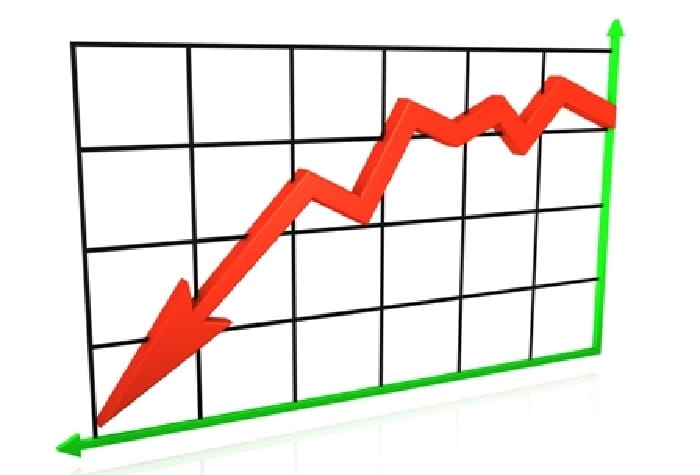Did deregulation cause the financial crisis? essay
Do you think that the world is headed towards a cashless society within the next fifty years? Why or why not?
In my opinion, the world will become a 99% cashless society within the next 50 years. In other words, cash will be replaced by more liquid, convenient and secure forms of payment. The recent trends towards a cashless economy already illustrate this situation. Many purchases are done using credit or debit cards; there also exist electronic checks, smart cards, electronic payment systems, digital currencies such as Bitcoin, etc. (O’Connor & Faile, 2010). There are instant payment systems such as PayPal allowing customers to make online purchases in a more secure and convenient way. The popularity of technology and smartphones open ways for NFC payments and other mobile payments. In this diversity of payment forms, cash might be the most inconvenient form – it is insecure to keep large sums of cash, the banknotes might become shabby and lose their quality over time, etc. Therefore, more convenient and secure payment forms will eventually replace cash in the future.
References
O’Connor, D.E. & Faile, C.C. (2010). Basic Economic Principles: A Guide for Students. Greenwood Publishing Group.
Discussion 2.
- Describe and critique the Fed’s use of quantitative easing.
Quantitative easing is the policy of the Fed which is based on purchasing market securities and therefore decreasing interest rates. Due to the large inflow of capital provided by the Fed, the supply of money increases and therefore liquidity and lending are stimulated. This strategy is used when the economy is in a recession; quantitative easing stimulates lending, investment and spending because it becomes more beneficial to spend or to invest then to save. However, quantitative easing might become inefficient when interest rates are already low (like it is currently in the U.S. economy). Furthermore, quantitative easing might lead to the increase of inflation if the speed of money supply increase is too quick. In addition, quantitative easing decreases the value of the dollar and makes the currency weaker.
References
Macroeconomic Analysis. (2013). Criticism of quantitative easing. Macroeconomic Analysis. Retrieved from http://macroeconomicanalysis.com/macroeconomics-wikipedia/criticism-quantitative-easing/
Discussion 3.
- Deposit insurance can cause a moral hazard problem. Can deposit insurance also cause an adverse selection problem? Please explain.
Yes, deposit insurance can cause an adverse selection problem in the banking industry. The problem is that deposit insurance might encourage risk-prone and careless people to enter the banking industry hoping that this insurance would cover the risks. In other words, those who would want the highest risks and would like to gamble with the money of depositors will be more likely to deal with deposit insurance. As a result, the banks present in the deposit insurance system will be more likely to have a negative net worth than other banks, which represents the results of adverse selection (Montiel, 2011).
References
Montiel, P. (2011). Macroeconomics in Emerging Markets. Cambridge University Press.
Discussion 4.
- Is there a relationship between the unemployment rate and the inflation rate? Please explain.
In the short-term, there is an inverse relationship between the unemployment rate and the inflation rate. Indeed, when unemployment decreases, more people have jobs, and therefore more people can afford buying various goods and services. The growth of demand in the short-term leads to the increase of prices, and therefore the growth of inflation is witnessed. If unemployment increases, the processes are reverse and the prices eventually tend to decline, causing deflation. The Phillips curve, which is an L-shaped curve, describes this relationship. However, in the long-term period the relationship does not hold as unemployment tends to reach the natural level, while inflation tends to the expected inflation level (Boundless, 2014).
References
Boundless. (2014). The Phillips curve. Boundless. Retrieved from https://www.boundless.com/economics/textbooks/boundless-economics-textbook/inflation-and-unemployment-23/the-relationship-between-inflation-and-unemployment-105/the-phillips-curve-399-12496/
Discussion 5.
- Was the repeal of the Glass-Steagall Act one of the causes of the Great Recession? Please explain.
No, the repeal of the Glass-Steagall Act was not one of the causes of the Great Recession (2007-2009). The crisis emerged largely due to risky operations with securities that were not covered by the Glass-Steagall Act. Banking companies engaged in risky practices selling derivatives and using risky lending practices which the Glass-Steagall Act did not regulate. In addition, a very limited number of companies used the repeal of the Glass-Steagall Act and combined investment with commercial banking (Calabria, 2009). In addition, the companies which were in the center of the crisis were not the subjects of the Glass-Steagall Act, and therefore the repeal of this Act could not have affected their activity. Hence, the Glass-Steagall Act was not one of the causes of the Great Recession.
Do you like this essay?
Our writers can write a paper like this for you!



